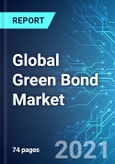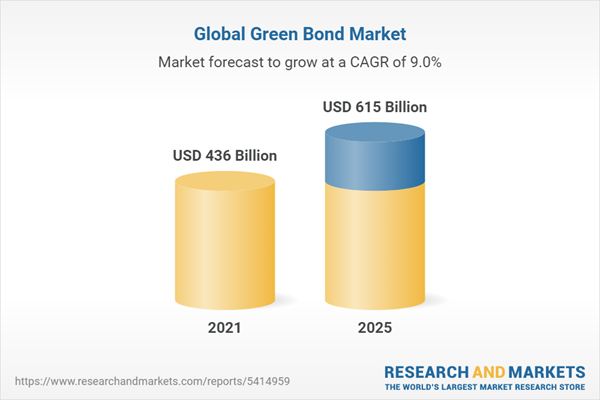This report presents an in-depth analysis of the global green bond market by value, by currency type, by issue size, by issuer type, by region, etc. The report also provides a regional analysis of the green bond market, including the following regions: Africa, Asia Pacific, Europe, Latin America, North America, and Supranational.
The green bonds are listed on four major green bond indices globally, which are: S&P Green Bond Index, Bloomberg Barclays MSCI Green Bond Index, BofA Global Green Bond Index, and Solactive Green Bond Index. The report also includes the comparison of the major Green Bond Indices.
The global green bonds are issued by many issuer types. The green bond issuers are generally categorized broadly as public sector issuers and private sector issuers. Under the category of private sector issuers, there are many financial corporates who issue green bonds worldwide. Lately, in 2020, the public sector issuers took the driving steer in the issuance of green bonds globally.
Some of the financial corporates - HSBC, BNP Paribas, Crédit Agricole, and Citi Group - are also profiled with their financial information and respective business strategies.
'Green Bond' refers to the sustainable fixed income instrument that raise funds to finance projects which are aimed to possess positive environmental and/or climate benefits. The issuance of green bonds is restricted to follow the Green Bond Principles stated by International Capital Market Association.
Green bonds raise capital for green projects which are related to renewable energy, clean transportation, sustainable water management etc. Green bonds are often segmented on the basis of sectors such as, Government Backed Entities, Non-Financial Corporates, Financial Corporates, Sovereign, Development Banks, Local Government, ABS, and Loan. Moreover, the green bond can also be classified on the basis of issuer types, issuing currency, issue deal size, etc.
With the onset of COVID-19, the global green bond market declined issuance in the first half of the year 2020. However, factors like growing concern over breakdown of GDP and rising unemployment, raised awareness to support sustainable bond market, which increased the demand for green, social and sustainability bonds globally. There was a growth in issuance of the green bond market in the second half of the year 2020.
The global green bond market has grown at a significant CAGR during the years 2016-2020 and projections are made that the market would rise in the next four years i.e., 2021-2025 tremendously.
The green bond market is anticipated to expand because of growing demand for renewable energy, growing demand for clean drinking water and sanitation, rising concern over CO2 emission, rising awareness about forest conservation, and growth in urban population across the world, etc. Yet the market faces some challenges like greenwashing, lack of green bond issuance, etc.
The green bonds are listed on four major green bond indices globally, which are: S&P Green Bond Index, Bloomberg Barclays MSCI Green Bond Index, BofA Global Green Bond Index, and Solactive Green Bond Index. The report also includes the comparison of the major Green Bond Indices.
The global green bonds are issued by many issuer types. The green bond issuers are generally categorized broadly as public sector issuers and private sector issuers. Under the category of private sector issuers, there are many financial corporates who issue green bonds worldwide. Lately, in 2020, the public sector issuers took the driving steer in the issuance of green bonds globally.
Some of the financial corporates - HSBC, BNP Paribas, Crédit Agricole, and Citi Group - are also profiled with their financial information and respective business strategies.
Company Coverage
- HSBC
- BNP Paribas
- Crédit Agricole
- Citi Group
Region Coverage
- Asia Pacific
- Europe
- Latin America
- North America
- Supranational
Executive Summary
'Green Bond' refers to the sustainable fixed income instrument that raise funds to finance projects which are aimed to possess positive environmental and/or climate benefits. The issuance of green bonds is restricted to follow the Green Bond Principles stated by International Capital Market Association.
Green bonds raise capital for green projects which are related to renewable energy, clean transportation, sustainable water management etc. Green bonds are often segmented on the basis of sectors such as, Government Backed Entities, Non-Financial Corporates, Financial Corporates, Sovereign, Development Banks, Local Government, ABS, and Loan. Moreover, the green bond can also be classified on the basis of issuer types, issuing currency, issue deal size, etc.
With the onset of COVID-19, the global green bond market declined issuance in the first half of the year 2020. However, factors like growing concern over breakdown of GDP and rising unemployment, raised awareness to support sustainable bond market, which increased the demand for green, social and sustainability bonds globally. There was a growth in issuance of the green bond market in the second half of the year 2020.
The global green bond market has grown at a significant CAGR during the years 2016-2020 and projections are made that the market would rise in the next four years i.e., 2021-2025 tremendously.
The green bond market is anticipated to expand because of growing demand for renewable energy, growing demand for clean drinking water and sanitation, rising concern over CO2 emission, rising awareness about forest conservation, and growth in urban population across the world, etc. Yet the market faces some challenges like greenwashing, lack of green bond issuance, etc.
Table of Contents
1. Executive Summary2. Introduction2.1 Green Bond: An Overview
2.2 Green Bond Timeline
2.3 Classification of Green Bond
2.4 Advantages and Disadvantages of Green Bonds (For Investors)
2.5 Advantages and Disadvantages of Green Bonds (For Issuers)
3. Global Market Analysis3.1 Global Sustainable Bond Market: An Analysis
3.1.1 Global Sustainable Bond Market by Value
3.1.2 Global Sustainable Bond Market by Type (Green Bonds, Social Bonds, and Sustainability Bonds)
3.2 Global Sustainable Bond Market: Type Analysis
3.2.1 Global Social Bond Market by Value
3.2.2 Global Sustainability Bond Market by Value
3.3 Global Green Bond Market: An Analysis
3.3.1 Global Green Bond Market by Value
3.3.2 Global Green Bond Market by Region (Africa, Asia Pacific, Europe, Latin America, North America, and Supranational)
3.3.3 Global Green Bond Market by Sector (Government Backed Entities, Non-Financial Corporates, Financial Corporates, Sovereign, Development Banks, Local Government, ABS, and Loan)
3.3.4 Global Green Bond Market Sector by Value
3.3.5 Global Green Bond Market by Currencies
3.3.6 Global Green Bond Market Currencies by Value
3.3.7 Global Green Bond Market by Size
3.3.8 Global Green Bond Size by Value
4. Regional Market Analysis4.1 Europe Green Bond Market: An Analysis
4.1.1 Europe Green Bond Market by Value
4.1.2 Europe Green Bond Market by Region
4.2 Asia Pacific Green Bond Market: An Analysis
4.2.1 Asia Pacific Green Bond Market by Value
4.2.2 Asia Pacific Green Bond Market by Region
4.3 Latin America Green Bond Market: An Analysis
4.3.1 Latin America Green Bond Market by Value
4.4 North America Green Bond Market: An Analysis
4.4.1 North America Green Bond Market by Value
4.5 Supranational Green Bond Market: An Analysis
4.5.1 Supranational Green Bond Market by Value
5. Impact of COVID5.1 COVID Impact on Global Green Bond Market
5.1.1 COVID Impact on S&P Green Bond Performance
5.1.2 GDP Breakdown
5.1.3 Rising Unemployment Rate
6. Market Dynamics6.1 Growth Driver
6.1.1 Growing Demand for Renewable Energy
6.1.2 Rising Concern over CO2 Emission
6.1.3 Rising Awareness about Conservation of Forest Area
6.1.4 Growing Need of Clean Drinking Water
6.1.5 Growing Need of Proper Sanitation
6.1.6 Growing Urban Population
6.2 Challenges
6.2.1 Greenwashing
6.2.2 Lack of Green Bond Issuance in Private Sector
6.3 Market Trends
6.3.1 Surging Demand for Smart Cities
6.3.2 Increasing Green Bond Issuance by Governments and Agencies
7. Green Bond Indices Comparison7.1 Global Green Bond Indices: A Comparison
8. Green Bond Issuer Profiles8.1 HSBC Green Bonds
8.1.1 Business Overview
8.1.2 HSBC Green Bond Projects by Segment
8.1.3 HSBC Green Bond Projects by Region
8.1.4 Business Strategy
8.2 BNP Paribas Green Bonds
8.2.1 Business Overview
8.2.2 BNP Paribas Green Bond Projects by Segments
8.2.3 BNP Paribas Green Bond Projects by Region
8.2.4 Business Strategy
8.3 Crédit Agricole Green Bonds
8.3.1 Business Overview
8.3.2 Crédit Agricole Green Bond Projects by Segments
8.3.3 Crédit Agricole Green Bond Projects by Region
8.3.4 Business Strategy
8.4 Citi Group Green Bonds
8.4.1 Business Overview
8.4.2 Citi Group Green Bonds by Segment
8.4.3 Citi Group Green Bonds by Region
8.4.4 Business Strategy
List of FiguresFigure 1: Type of Projects Eligible for Green Bonds
Figure 2: Green Bonds Timeline
Figure 3: Classification of Green Bonds
Figure 4: Advantages and Disadvantages of Green Bonds (For Investors)
Figure 5: Advantages and Disadvantages of Green Bonds (For Issuers)
Figure 6: Global Sustainable Bond Market by Value; 2016-2020 (US$ Billion)
Figure 7: Global Sustainable Bond Market by Type; 2020 (Percentage, %)
Figure 8: Global Social Bond Market by Value; 2016-2020 (US$ Billion)
Figure 9: Global Sustainability Bond Market by Value; 2016-2020 (US$ Billion)
Figure 10: Global Green Bond Market by Value; 2016-2020 (US$ Billion)
Figure 11: Global Green Bond Market by Value; 2021-2025 (US$ Billion)
Figure 12: Global Green Bond Market by Region; 2020 (Percentage, %)
Figure 13: Global Green Bond by Sector; 2020 (Percentage, %)
Figure 14: Global Green Bond Market Sector by Value; 2016- 2020 (US$ Billion)
Figure 15: Global Green Bond Market by Currency; 2020 (Percentage, %)
Figure 16: Global Green Bond Market Currencies by Value; 2016- 2020 (US$ Billion)
Figure 17: Global Green Bond Market by Size; 2020 (Percentage, %)
Figure 18: Global Green Bond Size by Value; 2016- 2020 (US$ Billion)
Figure 19: Europe Green Bond Market by Value; 2016-2020 (US$ Billion)
Figure 20: Europe Green Bond Market by Region; 2020 (Percentage, %)
Figure 21: Asia Pacific Green Bond Market by Value; 2016-2020 (US$ Billion)
Figure 22: Asia Pacific Green Bond Market by Region; 2020 (Percentage, %)
Figure 23: Latin America Green Bond Market by Value; 2016-2020 (US$ Billion)
Figure 24: North America Green Bond Market by Value; 2016-2020 (US$ Billion)
Figure 25: Supranational Green Bond Market by Value; 2016-2020 (US$ Billion)
Figure 26: S&P Green Bond Index (Dec, 2019- Dec,2020)
Figure 27: Global GDP Growth; 2020, (Percentage, %)
Figure 28: Global Unemployment Rate, 2019-2020 (Percentage, %)
Figure 29: Global Total Renewable Energy Capacity; 2014-2019 (Megawatt)
Figure 30: Global CO2 Emission; 2018-2050 (Billion Metric Tons)
Figure 31: Global Proportion Of Forest Area Under A Long-term Management Plan; 2000-2020 (Percentage, %)
Figure 32: Global Clean Drinking Water Availability; 2015 & 2020 (Percentage, %)
Figure 33: Global Sanitation Level; 2015 & 2020 (Percentage, %)
Figure 34: Global Urban Population; 2010 -2050 (Billion)
Figure 35: Global Smart City Revenue by Segment; 2020-2025 (US$ Billion)
Figure 36: HSBC Green Bond Projects by Segment; 2020 (Percentage, %)
Figure 37: HSBC Green Bond Projects by Region; 2020 (Percentage, %)
Figure 38: BNP Paribas Green Bond Projects by Segments; 2020 (Percentage, %)
Figure 39: BNP Paribas Green Bond Projects by Region; 2020 (Percentage, %)
Figure 40: Crédit Agricole Green Bond Projects by Segments; 2020 (Percentage, %)
Figure 41: Crédit Agricole Green Bond Projects by Region; 2020 (Percentage, %)
Figure 42: Citi Group Green Bonds by Segment; 2020 (Percentage, %)
Figure 43: Citi Group Green Bonds by Region; 2020 (Percentage, %)
Table 1: Major Green Bond Indices: A Comparison
Companies Mentioned
- HSBC
- BNP Paribas
- Crédit Agricole
- Citi Group
Table Information
| Report Attribute | Details |
|---|---|
| No. of Pages | 74 |
| Published | August 2021 |
| Forecast Period | 2021 - 2025 |
| Estimated Market Value ( USD | $ 436 Billion |
| Forecasted Market Value ( USD | $ 615 Billion |
| Compound Annual Growth Rate | 9.0% |
| Regions Covered | Global |
| No. of Companies Mentioned | 4 |









